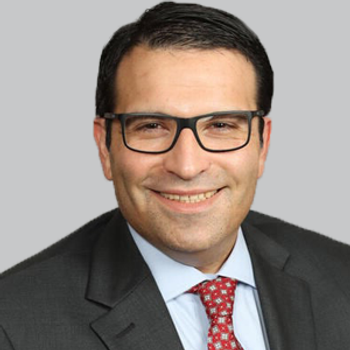
Understanding the Evolving Care of Rehabilitation and Stroke Recovery

Key Takeaways
- Neurorehabilitation aims to enhance daily function and quality of life post-stroke through individualized strategies, emphasizing early and intensive rehabilitation.
- Recent advancements include rehabilitation technology, telerehabilitation, community exercise programs, and neuromodulation, offering promising results in motor recovery.
Explore innovative neurorehabilitation strategies for stroke recovery, emphasizing personalized approaches and advanced technologies to enhance patient outcomes.
Neurorehabilitation is a well-established component of poststroke medical management. The World Health Organization describes rehabilitation as “a set of measures that assist individuals who experience (or are likely to experience) disability to achieve and maintain optimal physical, sensory, intellectual, psychological, and social functioning in interaction with their environment.”1 According to Francois Bethoux, MD, chair of the Department of Physical Medicine and Rehabilitation at Cleveland Clinic, “rehabilitation is a process rather than a discrete event, involves multiple disciplines, and follows the patient’s journey through many transitions and milestones.”
Guidelines recommend starting rehabilitation as early as possible (often within 48 hours after a stroke).2 Rehabilitation is often more intensive in the first 6 to 12 months after a stroke, and may start in an inpatient rehabilitation facility, in the home, or in an outpatient setting.
Neurorehabilitation aims to maximize a person’s ability to perform daily activities and optimize their quality of life through an individualized approach. Mechanisms by which this goal is achieved include promoting brain plasticity, teaching compensatory strategies (for example, training a nondominant limb or using an assistive device), managing symptoms that can hinder recovery, such as poststroke pain and spasticity, and empowering the person to maintain a healthy lifestyle.
"Multimodal approaches tailored to the individual patient’s disability are necessary to optimize stroke recovery," according to Andrew Russman, DO, a vascular neurologist and head of the Cleveland Clinic Enterprise Stroke Program. Recent advances and new approaches to stroke rehabilitation include the following:
- Rapidly growing use of rehabilitation technology, such as robotic devices, virtual reality, and instrumented treadmills
- Easier access to rehabilitation in the home environment, for example, with telerehabilitation and home monitoring
- Development of community exercise programs that are accessible to individuals with disabilities
- Use of neuromodulation (transcranial magnetic stimulation or direct current stimulation, deep brain stimulation, vagal nerve stimulation) in combination with rehabilitation therapies focused on movement or task repetitions, with promising results in terms of motor recovery even years after a stroke in some individuals
Mark Bain, MD, head of cerebrovascular neurosurgery at Cleveland Clinic, recently began implanting an FDA-approved vagal nerve stimulation device3 in patients with moderate to severe upper limb weakness to help improve their rehabilitation after stroke. Building upon their positive 2023 phase I trial,4 Andre Machado, MD, chief of the Neurological Institute at Cleveland Clinic, and colleagues are leading the RESTORE study (
Overall, stroke recovery is a long-term dynamic process that requires a holistic and personalized approach, adjusted over time depending on the person’s evolving needs.“We need to be a beacon for our patients, striving for something more in their stroke recovery. Embracing these innovative approaches to stroke recovery is critical to expand the treatment options that our patients demand,” Russman concluded.
REFERENCES
1. World report on disability 2011. World Health Organization. Accessed April 27, 2025. www.who.int/disabilities/world_report/2011/report/en/
2. Sall J, Eapen BC, Tran JE, Bowles AO, Bursaw A, Rodgers ME. The management of stroke rehabilitation: a synopsis of the 2019 U.S. Department of Veterans Affairs and U.S. Department of Defense Clinical Practice Guideline. Ann Intern Med. 2019;171(12):916-924. doi:10.7326/M19-1695
3. Francisco GE, Engineer ND, Dawson J, et al. Vagus nerve stimulation paired with upper-limb rehabilitation after stroke: 2- and 3-year follow-up from the pilot study. Archives Phys Med Rehabil. 2023;108(8):1180-1187. doi:10.1016/j.apmr.2023.02.012
4. Baker KB, Plow EB, Nagel, S, et al. Cerebellum deep brain stimulation for chronic post-stroke motor rehabilitation: a phase I trial. Nat Med. 2023;29(9):2366-2374. doi:10.1038/s41591-023-02507-0
Newsletter
Keep your finger on the pulse of neurology—subscribe to NeurologyLive for expert interviews, new data, and breakthrough treatment updates.


































